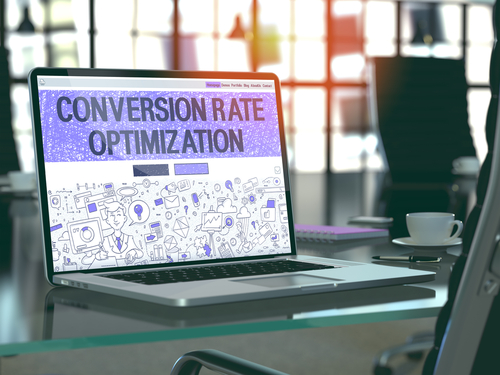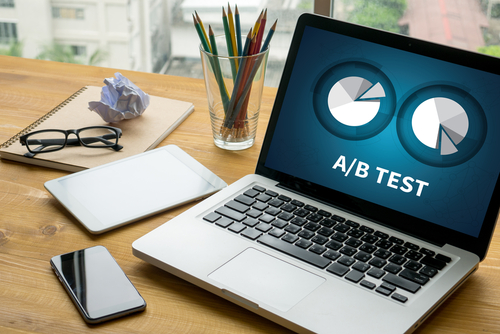
Conversion rate is one of the most important metrics to measure on your marketing materials, whether it’s your website, email marketing campaigns or ad. What really matters isn’t how many people visit your website, but how many visitors take action. Conversion rate optimization (CRO) is the process of increasing the percentage of visitors to a website that take a desired action on a webpage.
A conversion is simply what happens when a visitor completes an action you want him or her to take on your website, email or any marketing platform. All of your marketing materials should contain one basic call-to-action (CTA). This could be subscribing to your list, downloading a white paper or purchasing your product. Conversions are measured by the number of people who complete your CTA. CRO, in turn, refers to changes you make to increase the number of conversions. The way you implement this strategy is to test different elements of your campaigns and measure the performance of an ad, landing page or email.
How to Define CRO:
- The goal is to maximize the value of the traffic you already have
- Success is measured by your specific objectives and target KPIs
- The approach is structured and data-driven, informed by analytics and user feedback
What Should You Measure
Here are a few other metrics that are relevant to CRO and improving your conversion rate that you should understand and analyze as you’re making a conversion rate strategy.
Bounce Rate – the percentage of visitors who only visit one page on your website
Exit Rate – the percentage of visitors who leave your website on a particular webpage
Click Rate – the percentage of people visiting a web page who access a link to a particular advertisement
Average Time on Site – how long, on average, a user is exploring your website
Average Pageviews – how many pages, on average, a user visits before leaving your website
The Conversion Rate Optimization Process
The CRO process is simple, but requires some research upfront. From there, the ongoing process is a repetition of testing, reviewing and refining.
The Planning Stage
In this stage, you will gather insights and analytics to conduct CRO experiments. You will put together a hypothesis you want to test and set objectives for your experiments. It’s usually easiest to outline in an Excel sheet and group tests together based on platform or objective or type of media, whatever works best for you.
The Testing Stage
Now you get to have some fun. You will create your experiments based on what you want to test. The best type of experiment to start with is an A/B Test where you test 2 versions of the same item (headline, CTA button, advertisement). You can use A/B testing software to make this stage easier, or you can use some free tools, such as Google Experiments.
The Review Stage
Once your experiment is complete, you will review the results and decide what to do next based on whether your experiment was successful or not.
Once your experiment is complete you can either implement the winner of your test or refine your test and repeat again.
Conversion rate optimization is an ongoing process and takes a lot of planning to be successful. To find out how Moxie Digital can help you with this strategy, request a free marketing analysis and contact us today.




